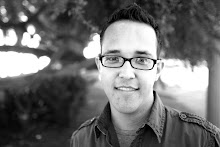Too often the church is a graveyard.
One of the tragic things about the church is that it can be so oriented toward the hereafter that Christians begin to rest-in-peace here in this life. People get saved in the pews and die right there in the sanctuary—and before long the church begins to stink.
In a few of my classes, death comes up frequently in conversation. The idea of living our lives oriented toward death is often tied up with ideas of nihilism and meaninglessness. For thinkers like Nietzsche and Heidegger, there is something about this crushing reality, when grasped in all its weight and finality, that throws into sharp relief the value and beauty of our present life. Living toward death necessitates creating meaning and saying a bold "Yes!" to the time that we have.
What is odd is that Christianity is also oriented toward death—but too often with the opposite result. Instead of generating a life-affirming "Yes!" to our lives here and now, Christianity too often casts an austere, reprimanding glance toward this life and then stares soberly ahead toward what is yet to come.
Honestly, this sort of attitude makes no sense to me. There is no reason that the anticipation of a grand future has to cast a grim shadow on the present. This life needs to be reclaimed. God has placed us here on this earth in this particular place at this particular time with these particular people for a reason. To neglect this life—with its great blessings as well as its great adversities—is to shrug off our connectedness with God. This life is where we meet our fellow humans in a deep and intimate way. This life is where we do the work of God. This life is where we first truly see God.
God is not the God of corpse-like living, of sitting and rotting in the church pews while the organist's dirge echoes around the sanctuary. God is the God of yes-saying, of vibrant and engaged living here and now. God has given us life—it is our responsibility to live.

